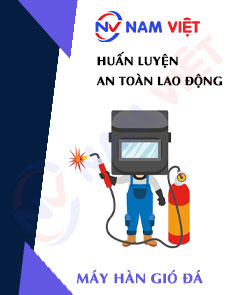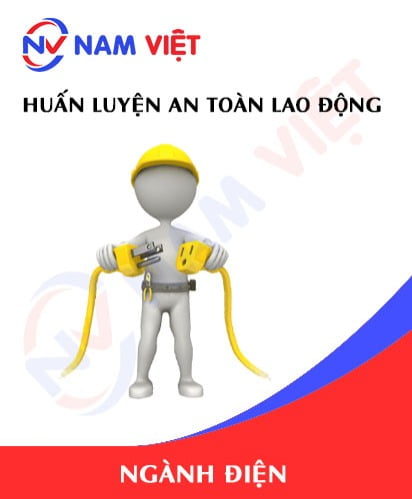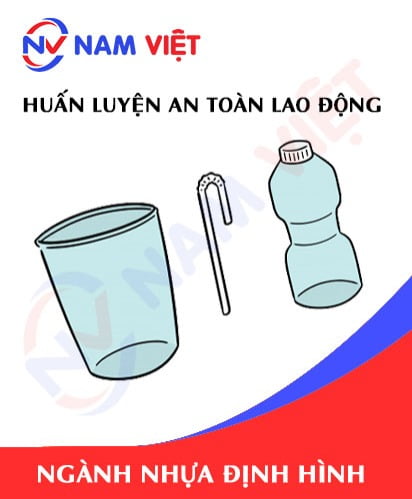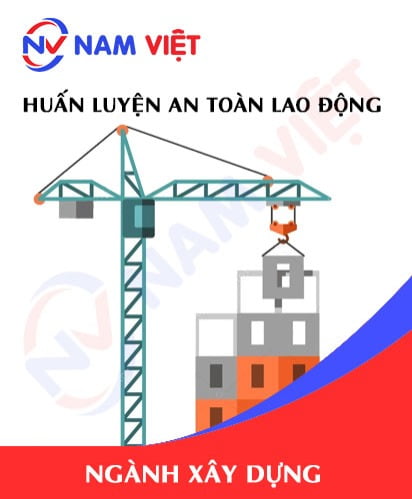Occupational Safety Training for Operating an Oxy-Acetylene Welding Set
99,000 ₫
Note: The above price is calculated for one person and may vary depending on the number of trainees participating in the course and market fluctuations. For more accurate pricing support, please refer to the price list or contact our consultants directly.
Occupational safety is an important issue when operating an oxy-acetylene welding set and needs to be addressed promptly to ensure the health and safety of workers and enhance the reputation of businesses here. The Occupational Safety Training course is one of the effective solutions to raise awareness on preventing workplace accidents for workers when operating an oxy-acetylene welding set.
Table of Contents
Toggle1. Overview of the Gas Welding Machine
a. What is a Gas Welding Machine?
The gas welding machine, also known as an acetylene-oxygen welding machine or gas welding machine, is a device used to weld and cut metals using a combination of a pressurized gas (usually oxygen) and acetylene or other gases such as propane. This process is called oxy-acetylene welding or oxy-gas welding, depending on the type of gas used.
A gas welding machine works by burning acetylene or propane gas with oxygen to generate high heat to melt the metal. Oxygen provides the necessary combustion to burn acetylene or other gases, producing a hot flame capable of melting and joining metal pieces together. This allows welders to create strong and precise welds on metal products.
Gas welding machines are widely used in various applications, from metal repair and fabrication in industry to welding and cutting metals in sectors such as construction and automotive repair. It is an essential tool in metalworking and has been used for decades to efficiently join and cut metal.

b. Operating Principle of the Gas Welding Machine
The gas welding machine operates based on the combination of two gases: oxygen (O2) and acetylene (C2H2) or propane (C3H8). Here is the basic operating principle of a gas welding machine:
- Fuel supply: The machine uses cylinders of acetylene or propane gas as fuel. This gas is usually stored under high pressure to maintain a liquid state.
- Oxygen supply: Oxygen cylinders provide the necessary oxygen for fuel combustion. Oxygen is typically stored under high pressure or supplied from an external source.
- Fuel-oxygen mixture: Fuel (acetylene or propane) and oxygen are mixed in the welding torch. The torch is designed to create an accurate mixture of the two gases for efficient combustion.
- Flame generation: When fuel and oxygen mix in the torch, they produce a high-temperature flame capable of melting metal.
- Welding or cutting metal: The flame is controlled to provide sufficient heat to melt and join metal pieces during welding. For cutting, the flame softens and slices through the metal with the aid of an appropriate cutting tool.
- Flame control: The welder adjusts the flame size and shape by controlling fuel and oxygen flow. This allows precise regulation of flame temperature and focus according to welding or cutting requirements.

c. Industries Using Gas Welding Machines
Gas welding machines are used in various industries for metal welding and cutting. Key industries include:
- Mechanical engineering: Gas welding machines are essential for welding and cutting metal parts to manufacture and repair machinery, equipment, and metal structures.
- Construction: In construction, gas welding machines are used to join metal components, especially steel and alloys.
- Automotive repair: Gas welding machines are used to repair and restore metal parts of vehicles, including exhausts, metal panels, and other components.
- Aerospace: In aircraft manufacturing and maintenance, these machines weld and cut metal parts of airplanes.
- Chemical manufacturing: Used for welding and cutting tasks required in industrial production and maintenance of equipment.
- Shipbuilding: For building and repairing ships and watercraft, gas welding machines are used to join and repair metal components.
- Metal fabrication: Companies use gas welding machines for welding and cutting metals during the production of metal products.
2. Overview of Safety Training for Operating Gas Welding Machines
a. What is Occupational Safety Training?
- Occupational safety training for operating gas welding machines provides workers with awareness and skills to prevent workplace accidents. Workers who directly operate gas welding machines fall under Group 3.
- The training helps workers recognize hazards, prevent risks, and reduce workplace accidents during their tasks.
REGISTER FOR OCCUPATIONAL SAFETY TRAINING SERVICE
b. Training Duration
Initial safety training:
- Total training time is at least 24 hours, including testing time.
- 8 hours of theory on policies, laws, and occupational safety and hygiene
- 8 hours of theory on basic occupational safety and hygiene knowledge
- 4 hours of theory on specialized training content
- 2 hours of practice on specialized training content
- 2 hours of final theoretical test
The training center schedules sessions according to workers’ availability. Typically, there are 6 sessions over 3 days if the company arranges continuous training time.
Periodic safety training:
- Before the occupational safety card expires, workers must complete a periodic safety training course, with duration at least 50% of the initial training time.
Explanation: The total duration of periodic safety training is at least 12 hours, including testing. After completing the course and passing the test, workers receive a renewed occupational safety card.
c. Training Content
| No. | TRAINING CONTENT | TRAINING TIME (HOURS) | |||
| Total | Including | ||||
| Theory | Practice | Test | |||
| I | Policy and Law System on Occupational Safety and Hygiene | 8 | 8 | 0 | 0 |
| 1 | Overview of regulations and legal documents on occupational safety and hygiene. | 6 | 6 | ||
| 2 | Standards and technical regulations on occupational safety and hygiene. | 1 | 1 | ||
| 3 | Specific regulations from government agencies regarding safety and hygiene when building, expanding, or renovating production facilities, and inspecting machines, equipment, materials, or hazardous substances. | 1 | 1 | ||
| II | Basic Knowledge on Occupational Safety and Hygiene | 8 | 8 | 0 | 0 |
| 1 | Basic knowledge of hazardous and harmful factors at the workplace. | 4 | 4 | ||
| 2 | Methods to improve working conditions. | 1 | 1 | ||
| 3 | Safety culture in production and business. | 1 | 1 | ||
| 4 | Rights and obligations of employers and employees; safety and hygiene policies; role of safety officers. | 1 | 1 | ||
| 5 | Safety rules, signage, use of protective equipment; first aid skills; prevention of occupational diseases. | 1 | 1 | ||
| III | Specialized Training Content | 6 | 4 | 2 | 0 |
| Comprehensive knowledge of machines, equipment, hazardous substances; risk analysis and management; safe working procedures for machines and hazardous substances. | 6 | 4 | 2 | ||
| IV | Final Safety Training Test | 2 | 2 | 0 | 0 |
| Total | 24 | 22 | 2 | ||
See more training content for all 6 groups
d. Occupational Safety Card
After completing the safety training course and passing the test, workers are issued an occupational safety card (commonly referred to as a Group 3 safety certificate).
Group 3 safety cards include information such as name, date of birth, specific work and environment, training duration, official stamp, and signature confirming course completion.
According to regulations in Clause 2, Article 24 of Decree 44/2016/ND-CP, there are two cases:
- If the employer and employee have a labor contract, the employer must stamp and sign the safety card after the worker completes training and passes the test.
- If the worker is freelance or seasonal, without a labor contract, the training unit must stamp and sign the card after completion of the training and test.

3. Hazards When Operating a Gas Welding Set
When operating a gas welding set, there are several hazards that welders need to consider and follow safety measures for. Below are some common hazards when using a gas welding set:
- Fire and Explosion: Acetylene or propane gas is highly flammable and explosive. The risk arises from unsafe mixing of fuel and air or gas leaks, which can lead to serious explosions.
- Toxic Gases: Using a gas welding set in confined spaces can cause acetylene or propane gas accumulation, posing an explosion risk. Oxygen gas can also cause explosion risks when interacting with oil or flammable materials.
- Thermal Radiation: The flame generated by the gas welding set has a very high temperature and can cause burns or fire. Welders must wear protective gear to shield their skin from the flame and heat rays.
- Light Radiation: Gas welding produces very bright light that can injure the eyes if protective eyewear is not used.
- Smoke and Harmful Fumes: During welding, smoke and fumes may be generated from the base metal, coatings, or paint. These fumes can be harmful if inhaled. Adequate ventilation and respiratory protection are essential.
- Electrical Voltage and Current: If the welding set uses electricity, contact with live current can cause injury to the welder.
- High Temperature: Molten metal can cause burns or injuries if touched directly.

4. Occupational Safety Measures When Operating a Gas Welding Set
To control and minimize occupational accident risks when operating a gas welding set, the following safety measures should be followed:
- Training: Ensure all welders or personnel working with the gas welding set are trained in equipment usage and related safety measures. Training should include operating the set, safety procedures, and identifying potential hazards.
- Safe Ignition: Use safe ignition devices to light the fuel. Avoid blowing on the flame with your mouth, as this can cause fire or explosion hazards.
- Equipment Inspection: Check the welding equipment before use to ensure it is functioning properly. Ensure hoses, protective eyewear, respiratory protection, and other parts are in good condition.
- Personal Protective Equipment (PPE): To protect your health, wear PPE including safety goggles, flame-resistant clothing, heat-resistant gloves, and a safety helmet.
- Work Area Control: Work in a spacious area to prevent acetylene or propane gas accumulation. Ensure proper ventilation or fans to remove toxic gases and smoke.
- Fuel and Oxygen Check: Inspect fuel cylinders (acetylene or propane) and oxygen tanks for leaks or damage. Use shut-off valves to disconnect fuel and oxygen after use.
- Hose Management: Ensure hoses are not pinched, torn, or exposed to flames.
- Work Environment Check: Ensure no flammable or explosive objects are nearby. If present, remove or protect them from the flame.
- Follow Safe Welding Procedures: Adhere to safe welding procedures and plan the work in advance. Ensure you read and understand the guidance documents and regulations related to welding.
- Backup Systems: Have contingency plans for emergencies, including ready access to fire extinguishers and first aid kits.
- Regular inspection of the gas welding set to detect safety issues such as wear, damage, or mechanical failure, reducing the risk of occupational accidents.
5. Benefits of Occupational Safety Training
An Toàn Nam Việt provides your business with the following benefits after completing occupational safety training courses according to Decree 44/2016/ND-CP on labor safety and hygiene:
- Workers can recognize potential occupational hazards and take preventive measures to avoid accidents.
- Your business can establish risk prevention measures in production, operation, and maintenance processes.
- Reduce costs associated with safety incidents.
- Continuous production helps increase labor productivity and product quality.
- Compliance with labor safety laws reduces legal risks.
- Enhances professionalism and reputation, boosting your company’s brand.
An Toàn Nam Việt’s training programs help individuals prevent external hazards, avoiding injuries or even fatalities.
REGISTER FOR OCCUPATIONAL SAFETY TRAINING
6. Customer Feedback After Completing Training
An Toàn Nam Việt has many years of experience supporting businesses across Vietnam, particularly in the southern provinces. This responsibility is extremely valuable to us, which is why our Occupational Safety Training is becoming increasingly professional. Positive feedback and suggestions from clients drive our growth. Below are testimonials from partners we have served.
See more customer interviews after using our services at An Toàn Nam Việt
7. An Toàn Nam Việt’s Occupational Safety Training Capability
An Toàn Nam Việt is a reputable and high-quality occupational safety training center in Vietnam, conducting continuous training at factories, production workshops, and construction sites across all 63 provinces.
REGISTER FOR OCCUPATIONAL SAFETY TRAINING
Occupational Safety Training License
- An Toàn Nam Việt has been inspected and certified by the Department of Safety, Ministry of Labor – Invalids and Social Affairs for occupational safety and hygiene training, solidifying our training capability.

Training Materials and Lectures
- Training materials are reviewed to ensure accurate knowledge and effective application before being used in occupational safety courses.
- Teaching methods are standardized according to An Toàn Nam Việt’s methodology, developed by experts in occupational safety training for maximum learning efficiency.
Facilities
- Controlling classroom factors enhances teaching efficiency and student knowledge absorption.
- Our training facilities feature spacious classrooms meeting standards for area, lighting, and training equipment.
8. Nationwide Reputable Occupational Safety Training Center
At An Toàn Nam Việt, we prioritize occupational safety training with dedication. Teaching workers self-protection skills contributes to national development.
We carefully prepare every detail, from teaching tools, materials, audio, to lighting, to ensure effective training.
Our instructors are experts with years of experience and research on hazards across industries and prevention methods.
Lectures are practical, lively, and easy to understand, helping workers learn comfortably while adhering to Decree 44/2016/ND-CP.
Our center is proud to provide professional and reputable occupational safety training with the following advantages:
- Competitive training costs with quality assurance.
- Flexible training schedules according to company operations.
- Fast and compliant certificate issuance procedures.
- Experienced instructors.
- Classroom control enhances teaching efficiency.
- Lectures tailored to corporate occupational safety needs.
- Dedicated and professional support for clients.

9. Additional Occupational Safety Training Materials
- Occupational Safety Training Materials
- Gas Welding Set Safety Materials
- Occupational Safety Training Test Materials
- Gas Welding Set Safety Quiz
- Gas Welding Set Training Slides
1 review for Occupational Safety Training for Operating an Oxy-Acetylene Welding Set
No comments yet















phanminhhang341
Trung tâm huấn luyện an toàn lao động chuyên nghiệp ở Việt Nam nha